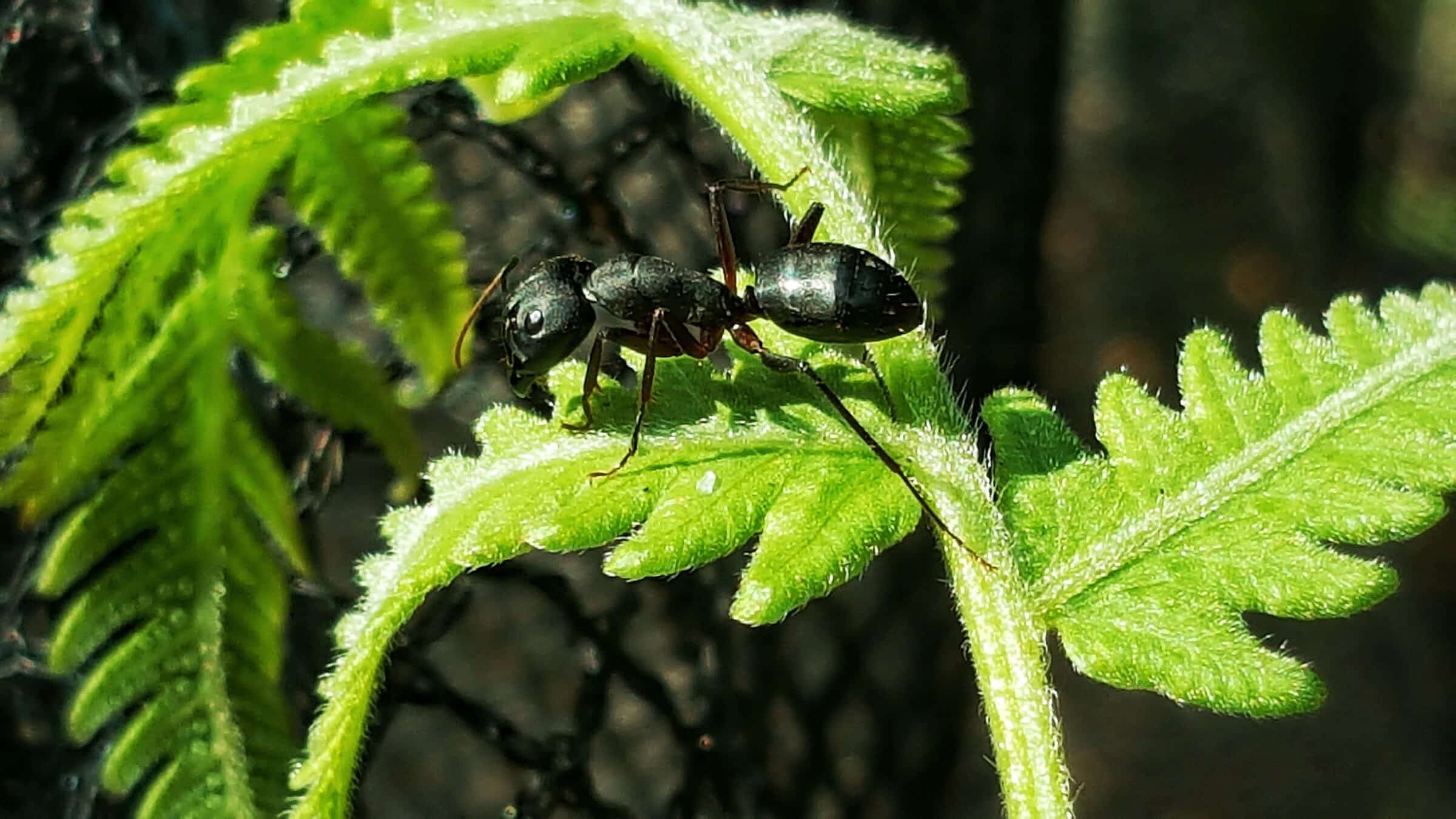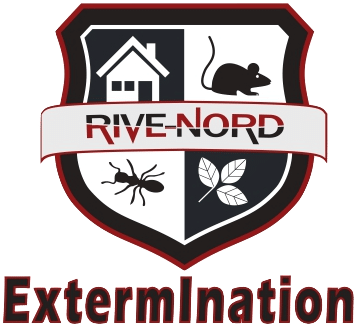Carpenter ants exterminator

Black carpenter ant
Camponotus Pennsylvanicus
Queen: 13 to 15 mm long.
Worker and soldier: 6 to 10 mm long (non-uniform size)
What does the carpenter ant look like?
- Large size, very variable: the workers are between 6 and 10 mm and the sexual insects are between 11 and 15 mm;
- Pedicel with 1 segment;
- Anus located at the end of the abdomen and surrounded by a circle of hair;
- Colour: dark brown to black.
Queen
- Brown, black or black and red.
- Larger than the rest of the colony.
- Tear off its wings after mating.
- The only ant to lay eggs in the colony.
- The mature nest can contain two to three thousand ants per nest over a period of three to six years.
Worker
- Brown, black or black and red.
- Wingless, females are sterile and have mandibles for grinding.
Soldier
- Brown, black or black and red.
- Larger than workers, has large mandibles.
- Without wings, has a big head.
Habits of the Carpenter Ant
- It is found in homes near wooded areas, where they are more likely to be infested.
- They are also found in forests (old trees, stumps or poles) and in lawns.
- Damage is caused by workers.
- Their main habitat is in the wood (they dig the wood) damp and worm-eaten.
- They feed on wood, but also on products from animals or plants.
- They can bite.
- Habitats: inside walls, ceilings, window frames, under the threshold of the door, wood in contact with the ground, under the roof, on the floor (e.g. bathroom), along the gutters, etc…
Preferred habitat of the carpenter ant
First, carpenter ants live mostly in rotting dead wood. At this place, they dig deep galleries and establish their nests. This wood can be that of a dead tree, a stump, a log, a house frame or a fence post.
According to a study carried out in the United States, the nesting sites of carpenter ants are, in order of importance:
- Inside the walls;
- The inside of the ceilings;
- Under the threshold of a door;
- In wood in contact with the ground near the foundation;
- Along the spacers of the gutters;
- Under the roof;
- In empty doors;
- Under the floor;
- In window frames;
- Under bathroom floors.
In addition, they often roam on lawns, in houses and on forest floor litter.
Carpenter ant life cycle
Amazingly, the female lays 22 eggs in about 15 days when she wants to start a new colony.
The duration of the different stages of development is as follows:
Eggs: 25 days;
Larva: 21 days;
Pupa: 21 days;
Total development: 66 days.
The female makes herself or finds a smaller chamber where she isolates herself, lays her eggs and raises her future workers until they reach maturity. These are the smallest workers in the colony and will take care of the maintenance of the nest, the larvae and the sexual insects.
Then, the medium-sized workers will collect the food outside the nest. This one, very variable, includes/understands a great quantity of plants and animals, insects, meat, sugar, honey, honeydew (honey of aphid), syrup, jelly, jam, and grease. However, they do not feed on wood, but only pierce it to make their nest.
The larger workers, produced later, will become both soldiers and scouts. They will protect and defend the colony against possible enemies. Finally, they are the ones who will lay the eggs that will form the males (kings).
In the first week of July, sexual insects (with wings) appear. The colony does not produce sexual insects until it has reached two thousand workers, that is to say after 3 to 6 years. These will reproduce the following spring, from May to July.
Economic impacts of the carpenter ant
They infest wood, can cause damage seriously. However, a colony must contain several thousand insects to significantly damage the structure and require major repairs.
Protocol for controlling a Carpenter Ant infestation
1. Interview: ask a few preliminary questions to the client.
The carpenter ant exterminator will ask you certain questions in order to properly assess your situation:
- Where were the ants seen?
- Where are they most numerous?
- Where do they go? In which direction?
- Were winged insects seen?
- Is there a moisture problem in the structure (defective gutter)?
2. Inspection
Finding the nest is the key to good treatment against carpenter ants.
Six clues can help the carpenter ant exterminator quickly detect a nest;
1. Accumulation of sawdust on the ground.
2. Presence of tiny holes.
3. Frequent presence of ants in the area.
4. Presence of winged insects.
5. Framing damaged.
6. Clicking noise emitted by the mandibles of ants (this sound can be detected by sticking the ear to the suspicious site or by using a stethoscope).
Inside: Carefully inspect all areas mentioned above.
The technician should advise the customer to replace damaged structures and eliminate any moisture problems. Among the places not mentioned above, it is necessary to observe among others under the kitchen and bathroom sink as well as around the dishwasher.
3. Prevention against carpenter ants
- Prune any tree or branch that may touch the house.
- Correct any moisture problem such as leaking roof, damaged gutter, plumbing defect, poorly ventilated attic, etc…
- Replace any rotten or water-damaged planks.
- Remove any accumulated dead wood within 50 feet of the house.
- Eliminate all wood in contact with the ground, even if it comes from the frame.
- Only bring firewood into the house that will be used very soon.
- Immediately remove any wood showing signs of infestation.
Good to know
Call a professional carpenter ant exterminator
When the ant nest is outside the house, the cost of treatment is more affordable. On the other hand, inside, it can be complicated to overcome. Carpenter ants can be in hard-to-reach places. In reality, when you don’t know how to tackle the problem, you need to call in a professional carpenter ant exterminator. Finally, only this alternative will allow you to permanently settle their invasion.
We can offer you several solutions to overcome these unwanted ants. The competent people who make up our team will offer you unparalleled service. In addition, advice will also be delivered to you so that you can prevent another intrusion in the future. You will be surprised, the prices offered are very affordable. At any time, you can request a free estimate. This will allow you to have a clear and precise idea of the price that will be billed to you. Finally, the estimate also contains the details of the service and products that will be used.
what customers say about our service
Testimonials

